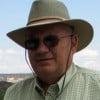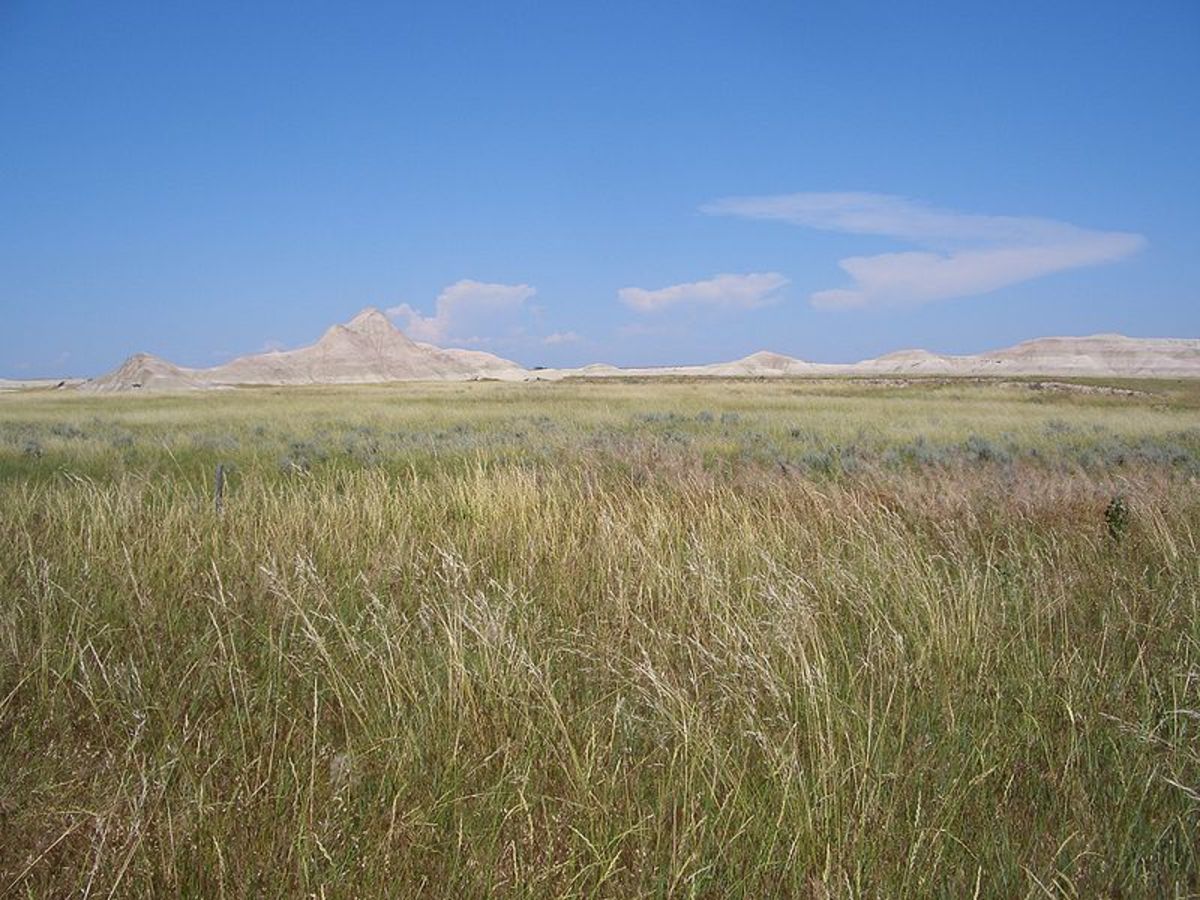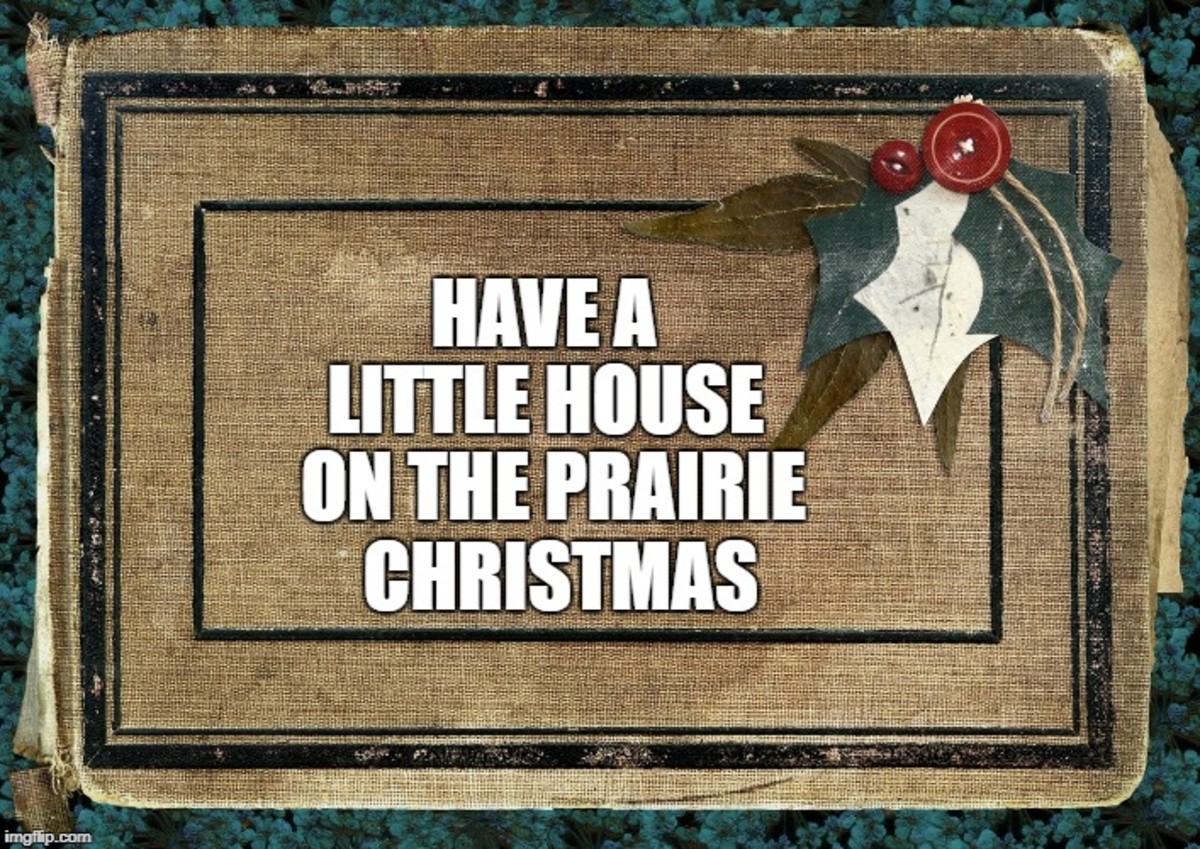Weston Wagons West - Episode H9 - Hank Weston visited Prairie City
Roads were included in surveys, but took years to develop
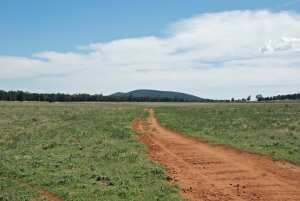
A nearby village had grown up not far from the Weston family
John Q. Deakin had first come to Jasper County in 1845, taking out the first claim in the vicinity of southwest Jasper County. Within a few years, he was operating a successful sawmill on Camp Creek a couple of miles northwest of where the Weston family had later located. James Elliot arrived in 1856 and located a few miles to the east of Deakin, near the home and tavern of William Means. Elliot dreamed of establishing a town. He laid out a town plat encompassing his cabin and the tavern of Means. He called the town Elliot. When he tried to obtain permission, the following year, for a post office to be located in the store he built near the tavern, he was told there was already a post office with the Elliot name, so he renamed his town Prairie City. Though the ‘town’ was slow to grow, it did hold its own and grew slowly over the following years.
Hank Weston and his family became aware of the town in 1859 when word got around that coal had been discovered there as a twenty-foot well was being dug nearby. Word spread, and it was soon discovered that there were four-foot deep pockets of coal under much of the land in the vicinity that could be dug and used for heating purposes in the winters. Prairie City was located about five miles (as the crow flies…) to the northeast of the Weston farm. Hank soon became friends with L.P. Wilson, James Offill, Ezra Adams, Deakin, Means and others in the area in and around Prairie City.
Roads were further developing in Des Moines Township in these years. The original surveys of land in Iowa provided for roads every mile in a grid pattern. Between the Weston farm and the new town of Prairie City on the northern border of the Township, for example, the road running past the southern edge of the Weston farm ran two and a half miles east, then four miles north into Prairie City. Rather than turning north to Prairie City, but going a mile south and then seven miles east, was the location of the town on Monroe, which the Weston family visited once or twice a month. During 1859 and 1860 and beyond, family members used these roads regularly as additional businesses were added in Prairie City and Monroe.
Attended a one-room rural school a mile north of this farm yard
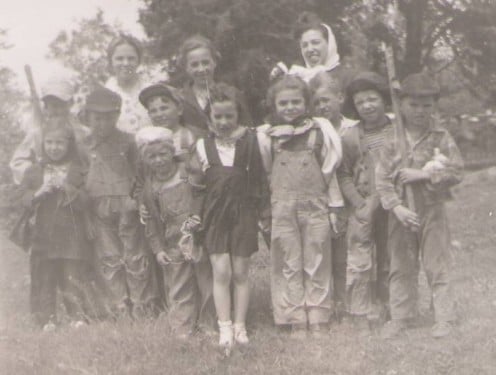
A one-room schoolhouse was built not far from the Weston farm
During the summer of 1859, efforts that had been underway in the surrounding rural area for a few years came to fruition with respect to local education. Rural schools had been built in Iowa from the first settlements west of Mississippi in the 1830s. A local plan, part of the larger planning, was devised to build a school to serve farm families in a four square mile area, with the school building near the center of the area. Locally, John Davis donated one square acre of land, on a rise, at the intersection of the two roads bisecting the designated four square miles. The school was built that summer, on the plot in the northeast corner of the intersection. The school was thereafter referred to as the Davis school in the neighborhood. From the Weston farmhouse, the school was a half mile west and one mile north.
The Weston families had been very fortunate to carry on the education of their children at home as a normal part of their everyday life throughout their lives. The adults took pride in their own educations and felt strongly that passing this on to their children was a priority. Joe and Mary had both been actively involved in the local education planning. Joe agreed to serve as one of the three initial directors to serve on the new school board for the Davis school, along with John Davis and Frank Farley. Frank Farley’s farmhouse was located on the northwest corner of the intersection, a half-mile west of the Weston farmhouse.
Four of the Weston children attended the fall term at the Davis school in 1859. Josh was 11. George was 10 but would be 11 late in September. Jessica was 8 and Nathan was 6. Laura at 5 and Isaac at 4 were a year, and two years, away, according to agreed school policy. At 15, it was decided that Cathy would not go to school. Her responsibilities in the home took precedent.
The wedding during the holidays was a joyous affair

The holidays brought a wedding to the Weston family
For the fall harvest season, Joe and Hank Weston hired Glen Farley to assist them to partially replace work that Jake would have done if he had not left after the spring planting. Glen, 21, was the third child, and second son, of Frank and Maud Farley. There were also three younger children in the family, so Glen was a ‘middle’ child. Glen was 5’ 8’’ and stocky, very amiable, and a hard worker. He got along with just about everyone, but was not aggressive. Some of his friends felt he even had an inferiority complex that was not borne out by his actions.
Sarah Weston, now 19, was also 5’ 8’’ tall, but was thin and plain, like her mother. She even wore her hair in a bun like her mother always had. Very competent and caring, Sarah had been very instrumental in raising the several younger children in the extended family along with her mother, sister, and sisters-in-law. She and Glen Farley had known each other for several years based on occasional community gatherings and living just a half mile apart for 8 years. With him being at meals at the Weston farmhouse many days through the fall harvest season, with many opportunities for extended conversations, they had grown close. At Thanksgiving time, they announced plans to marry during the Christmas-New Year’s holiday.
Each family was pleased with the decision of the young couple. They all worked together to prepare for the wedding and their life together. The Weston’s offered Glen a full-time work opportunity for the following year, as well as offering Glen and Sarah the opportunity to live with the Weston’s in Jake’s empty bedroom. They accepted the offer with the understanding they all could, and would, review the situation at the end of the following year. The Methodist minister from the church recently opened in Prairie City accepted their invitation to officiate the wedding at the Weston farmhouse. Both extended families made a large, joyous celebration as the year 1859 closed.
Note by the author
This Hx series of historical fiction family saga stories following Hank Weston consists of characters that are fictional or real persons used here entirely fictitiously. Prairie City is a contemporary community in Iowa and was founded about the dates noted. As a fictionalized version of the founding, some details of early Vandalia and Prairie City have been combined. The Wilson, Offill, and Adkins families were actual ancestors of the author’s wife. Those mentioned by name related to founding of Prairie City are pioneers of the area. The Davis and Farley families are fictitious. Activities and events are consistent with known historical facts, but are entirely fictitious.
The Jacob and Levi Weston characters were first created as a part of “The Homeplace Saga” stories. The first 20+ episodes of this Lx series filled in the early years of the lives of Levi, Jacob and their family, also descendants of Thomas and Fred Weston. These first 20 episodes of the Levi Weston story have been compiled into an ebook: “Weston Wagons West: Levi Weston, L1-20 (1823-1874).”
“Weston Wagons West” and “The Homeplace Saga” historical fiction family saga stories are the creation of the author, William Leverne Smith, also known as “Dr. Bill.”
This is "The Homeplace Saga" series of family saga, historical fiction stories
- "The Homeplace Saga" Blog
The home blog for "The Homeplace Saga" series of historical fiction family saga stories set in the southern Missouri Ozarks. All updates of the series are mentioned on the blog, regardless of platform.
For the eBooks of this series, visit:
- Dr. Bill Smith's Books and Publications Spotlight
Scroll down and right. Also available at Amazon.com
